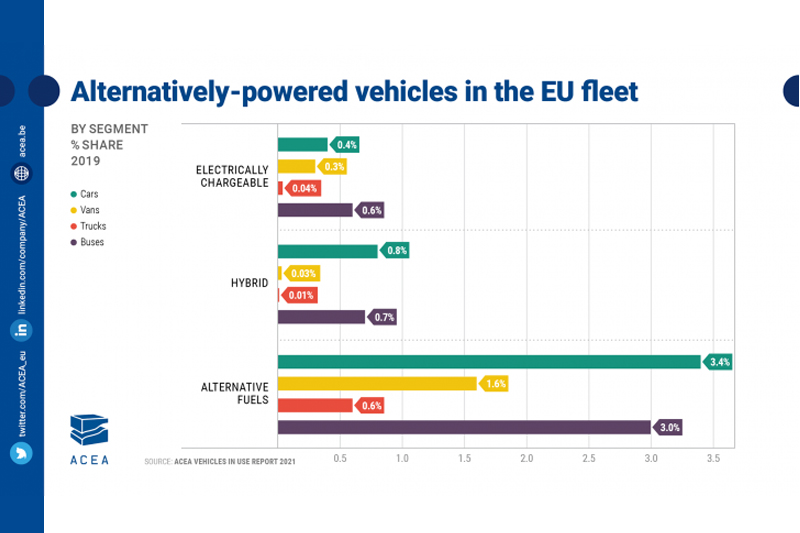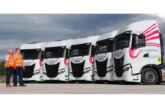
A study by the European Automobile Manufacturers’ Association (ACEA) has shown there are currently 6.2 million medium and heavy commercial vehicles on the EU’s roads.
Almost 98% of all these trucks run on diesel according to the 2021 ‘Vehicles in Use’ report, with an average age of 13 years. Just some 2,300 – or 0.04% of the total fleet – are zero-emission trucks.
European truck makers have reportedly estimated that around 200,000 zero-emission trucks will have to be in operation by 2030 in order to meet the CO2 targets for heavy-duty trucks. Based on ACEA’s data, this would require a staggering 100-fold increase in the space of under 10 years.
In its recently published Mobility Strategy however, the European Commission laid out the objective to have some 80,000 zero-emission trucks on the road by 2030, which in fact falls far short of what is required by the CO2 regulation (-30% emissions).
ACEA’s Director General, Eric-Mark Huitema, explained: “European truck manufacturers are committed to bringing zero-emission trucks to the market, and will be rapidly increasing their range of zero-emission vehicle offerings over the next few years. However, they cannot make such a radical and unprecedented shift alone.”
To make zero-emission trucks the preferred choice of transport operators, urgent action will be needed on European and member state levels. This includes establishing CO2-based road charges, energy taxation based on the carbon and energy content of fuels, a CO2 emissions pricing system and a dense network of charging and refuelling infrastructure suitable for trucks.
ACEA’s report also revealed the following facts about the fleet of commercial vehicles operating in Europe today:
- Counting almost 1.2 million trucks, Poland has the largest truck fleet, followed closely by Germany (1,010,742) and Italy (946,393)
- Aged more than 21 years, Greek trucks are the oldest in the EU. The newest trucks can be found in Austria (6.4 years)
- More than 28 million vans are in circulation throughout the EU. With 6 million vehicles, France has by far the largest van fleet
- The average age of light commercial vehicles in the EU is 11.6 years. Among the EU’s four major markets, Spain has the oldest van fleet (13.0 years), followed closely by Italy (12.6 years)
- Diesel-powered light commercial vehicles are dominant in all EU countries except for Greece. Almost 90% of the EU van fleet runs on diesel, just 0.3% of vans in the EU are battery electric
- Around 692,207 buses are in operation throughout the European Union, almost half of which can be found in three countries alone: Poland, Italy and France
- The average age of buses on EU roads is 11.7 years. The oldest buses can be found in Greece (19.9 years), while the newest ones are in Austria (4.8 years)
- Diesel buses still account for 94.5% the EU fleet, with only 0.6% being battery electric








